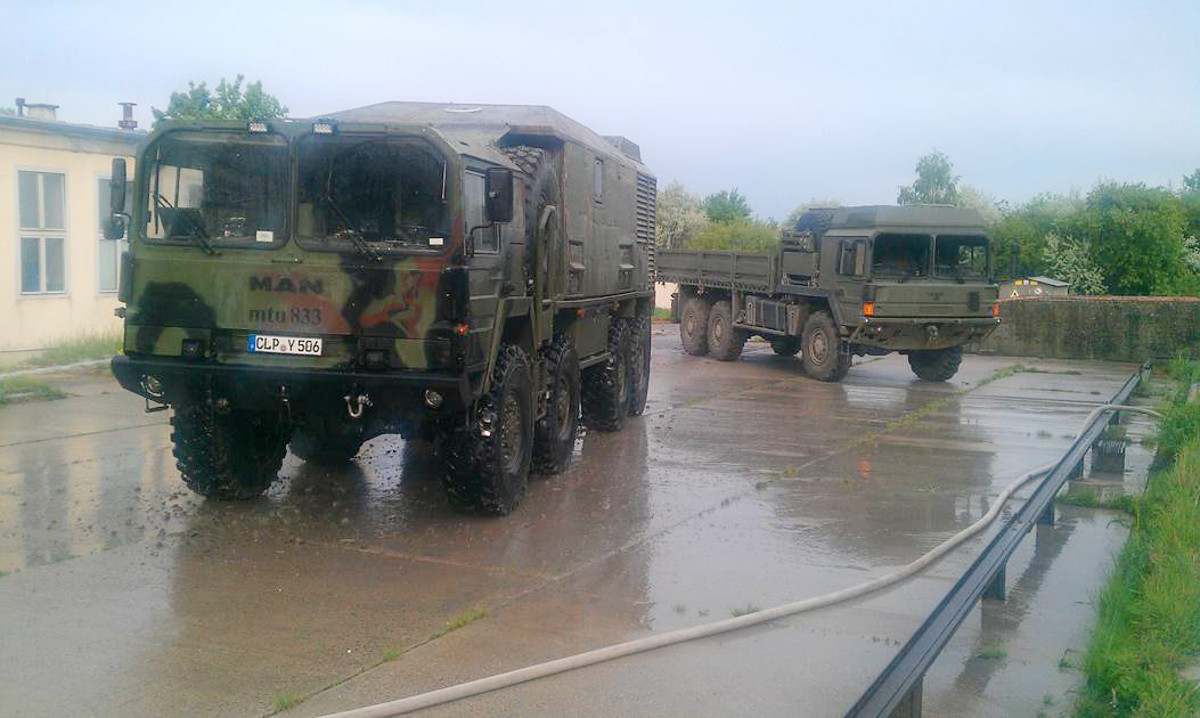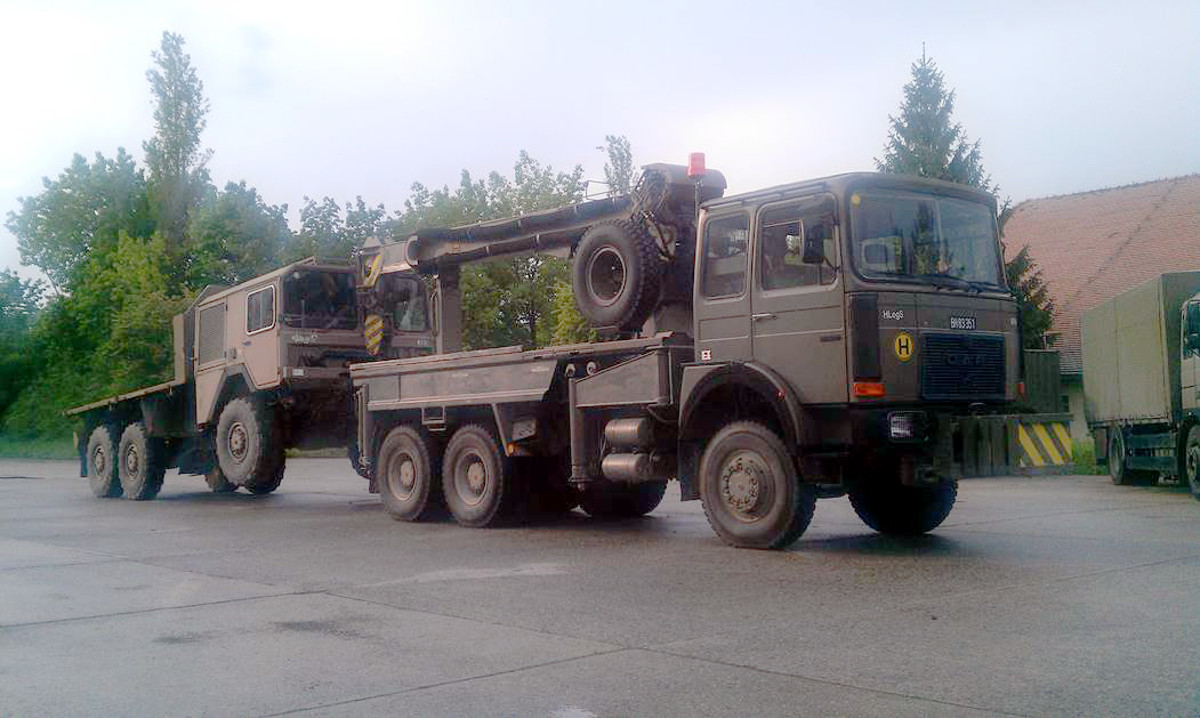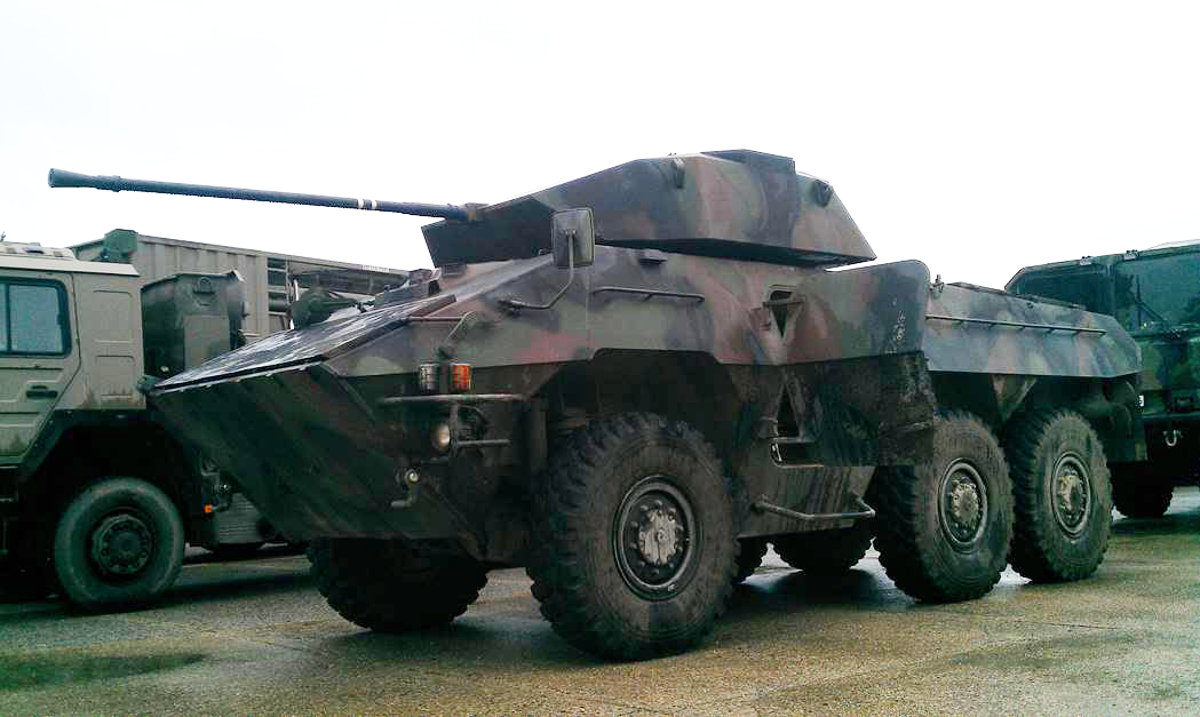On May 4 2012, the Army Motorization Institute (HLogS/KFW), Rheinmetall Military Vehicles Vienna (RMVV) and the Traditionsverband invited to an event documenting the development of the heavy MAN military vehicle series from its inception in the early 1970s with the ÖAF gl sLKW 20.320 to its current level in the highly mobile MAN HX and SX series trucks. Colonel Günther Gutmann, Chief of the Army Motorization Institute and “host” of the event, presented the development history of the ÖAF “sLKW” from 1974 until 1976. After the first oil crisis in 1973 (in the wake of the Jom Kippur war) and the resulting economic depression, the Austrian government decided that Austrian truck manufacturers should develop and produce a highly mobile, heavy 6x6 truck for the military. While MAN in Germany had just previously developed the “KAT 1” series of 4x4, 6x6 and even 8x8 chassis, it was decided that Austria should develop its own truck. Because ÖAF at that time was already in very close cooperation with MAN (and shortly thereafter would be completely merged into MAN), many parts of the German KAT 1 concept were adopted. The major difference was that ÖAF selected the water-cooled MAN D2538 V8 engine over the air-cooled Deutz engine installed in the German KAT 1. The resulting 6x6 truck was designated ÖAF gl sLKW 20.320 (“geländegängiger schwerer Lastkraftwagen mit 20 Tonnen höchstzulässigem Gesamtgewicht und 320 PS Leistung“).
Due to the low cab, no front radiator could be accommodated, thus ÖAF placed the radiator on the right-hand side of the cab behind the passenger door. The necessary airflow was provided by a hydraulically-driven fan, with the fan speed being adjusted independently of the engine RPM based on coolant temperature. This provided the vehicle with better low-speed offroad performance, where the air-cooled Deutz engine suffered from low engine RPM while the water-cooled ÖAF could operate at low engine RPM indefinitely.
For further details of the development and type-series of the ÖAF gl sLKW see the respective articles in our “Vehicles” section.
A “by-product” of the sLKW development was the ÖAF wheeled APC prototype built at the end of the 1970s. The Austrian Army had asked ÖAF and Steyr (its main two domestic providers of heavy vehicles) for a 6x6 wheeled APC and reconnaissance vehicle. ÖAF developed its prototype on the chassis of the sLKW while Steyr developed a completely new vehicle for its “Pandur” series. Because the ÖAF design built relatively high (due to the hull being mounted on top of a conventional truck chassis) Steyr won the contract, and the ÖAF prototype remained a piece of Austrian military vehicle development history.
After Colonel Gutmann’s presentation, visitors had the opportunity to view two vehicles on the proving grounds just behind the Institute’s main building. A 6x6 truck off the current manufacturing line (right-hand steered as it was part of an order for the UK) represented the latest generation of MAN SX vehicles, while the second truck was of special interest. Hugo Vogelsang from Northern Germany had converted an 8x8 German KAT 1 by removing the front-mounted Deutz engine and installing a rear-mounted MTU 833 out of a German APC “Marder”. From its 22.4 liters volume this engine produces 600 HP, and its owner had driven the 1000 km from Northern Germany to Vienna for this event. Obviously this vehicle was the star of the offroad presentations (see also our video of the event in the link below).
https://www.youtube.com/watch?v=KZn_tSpJ1ow






